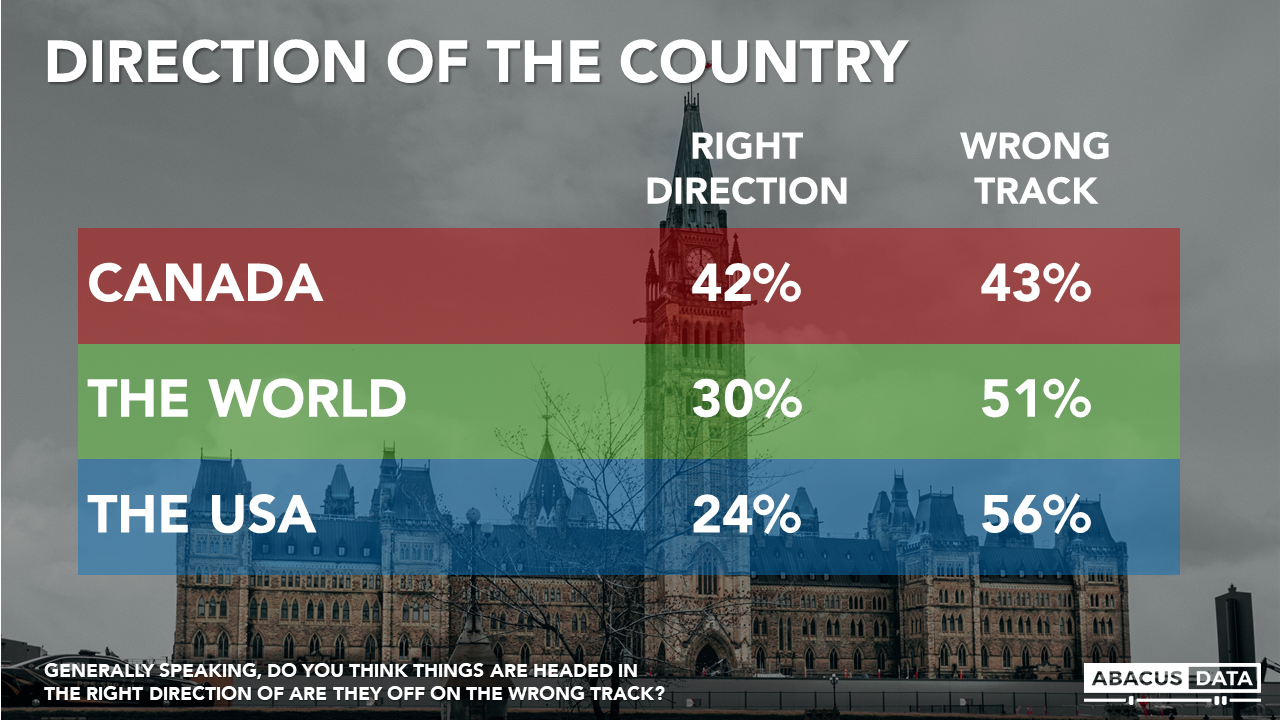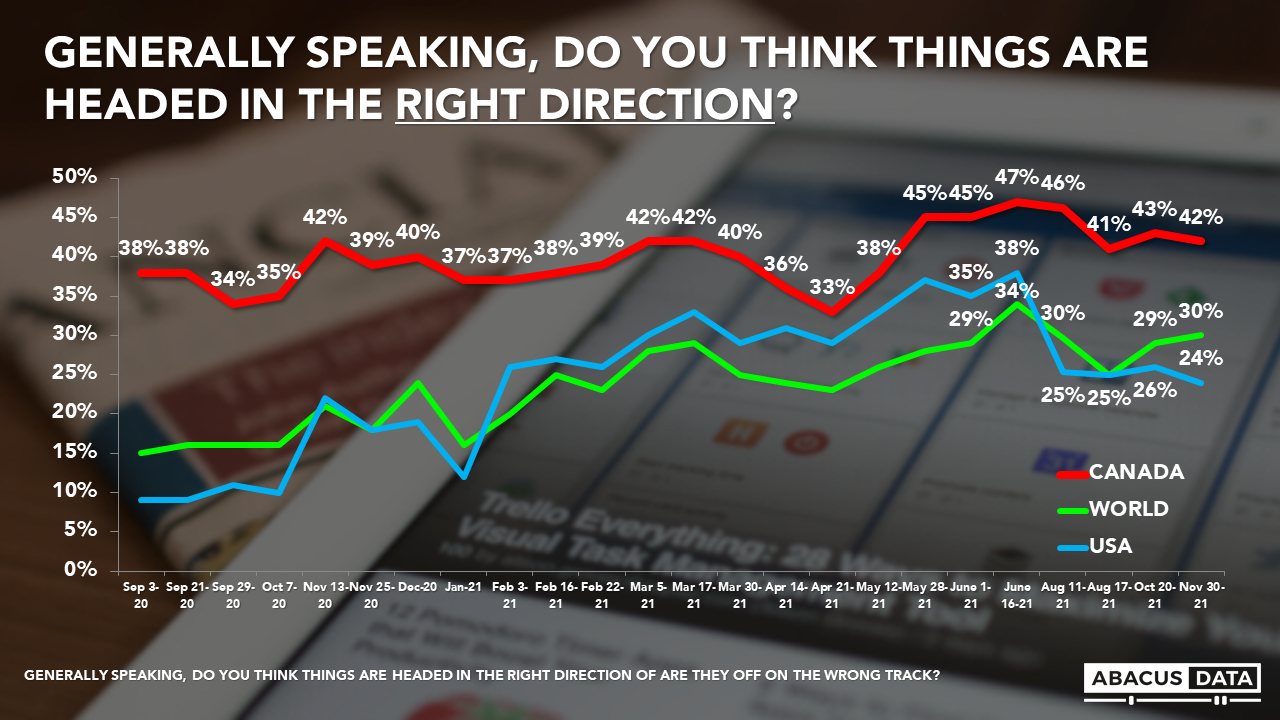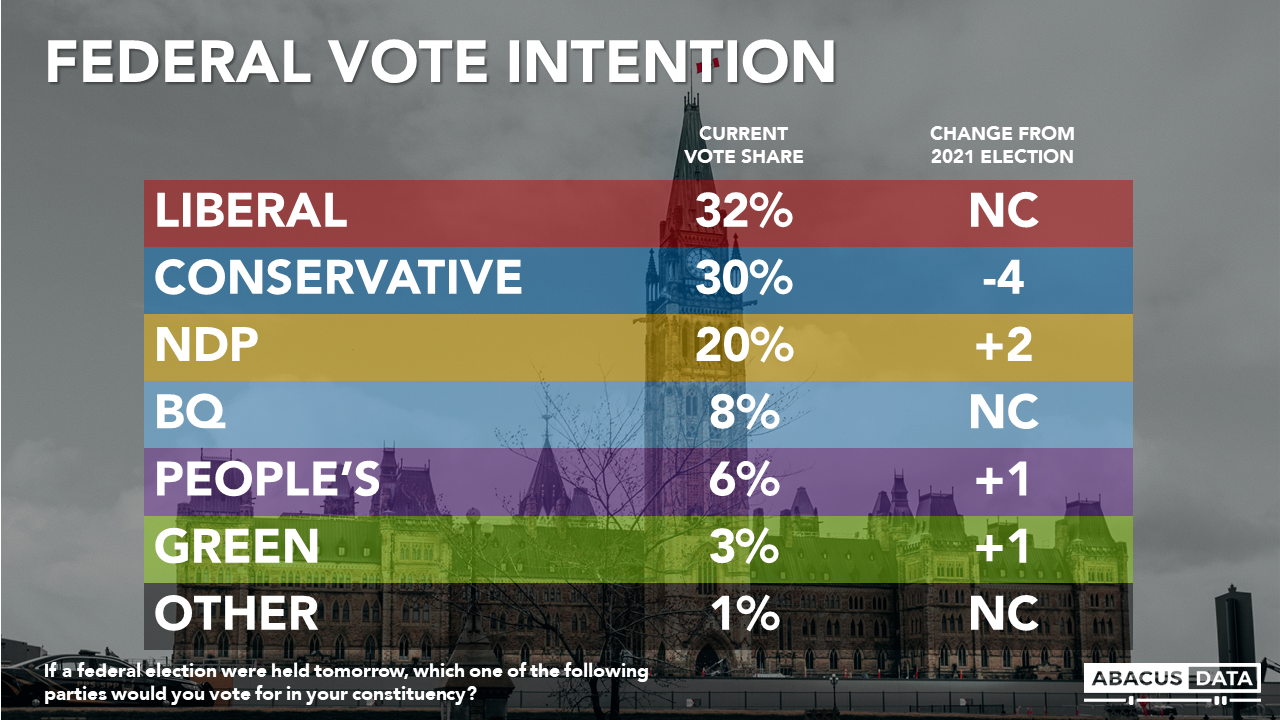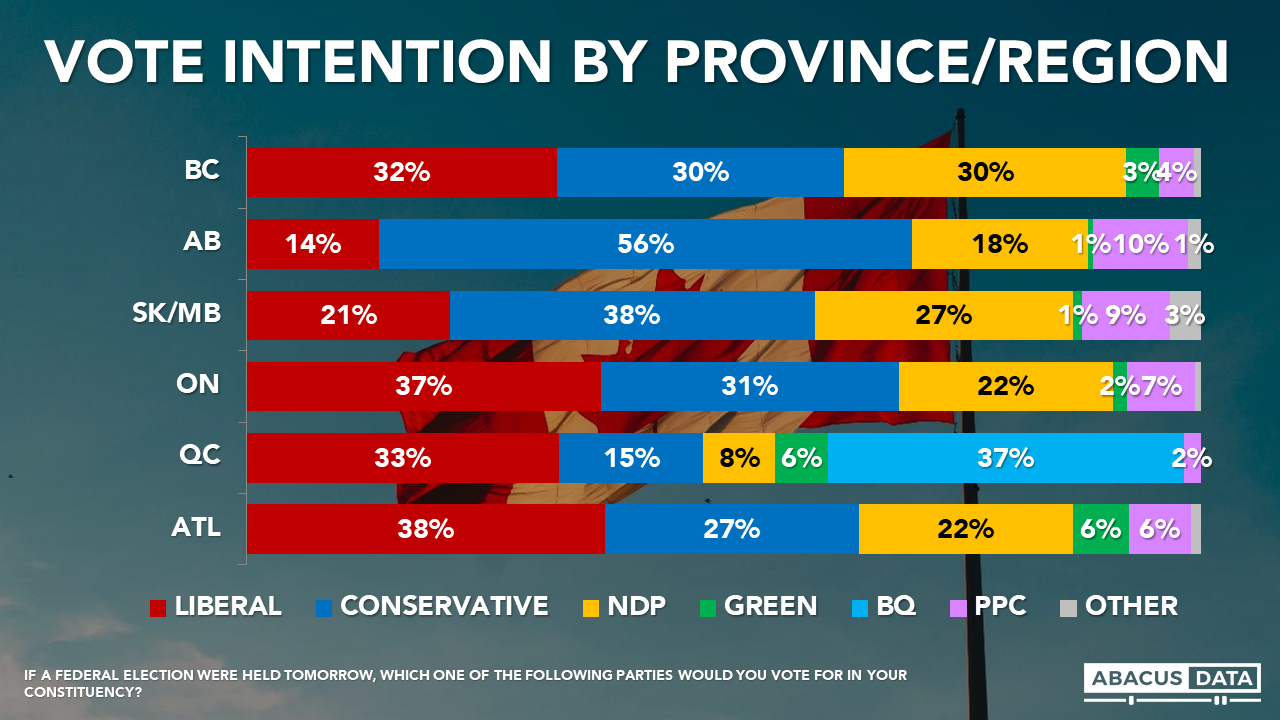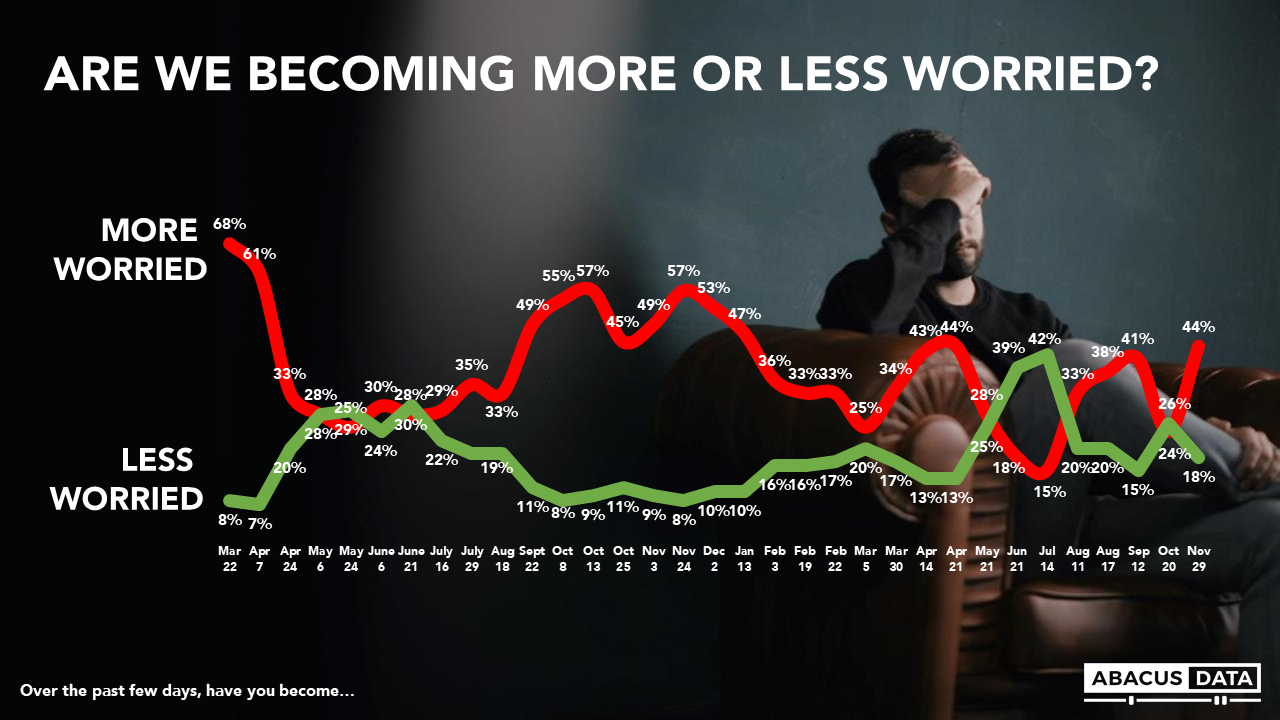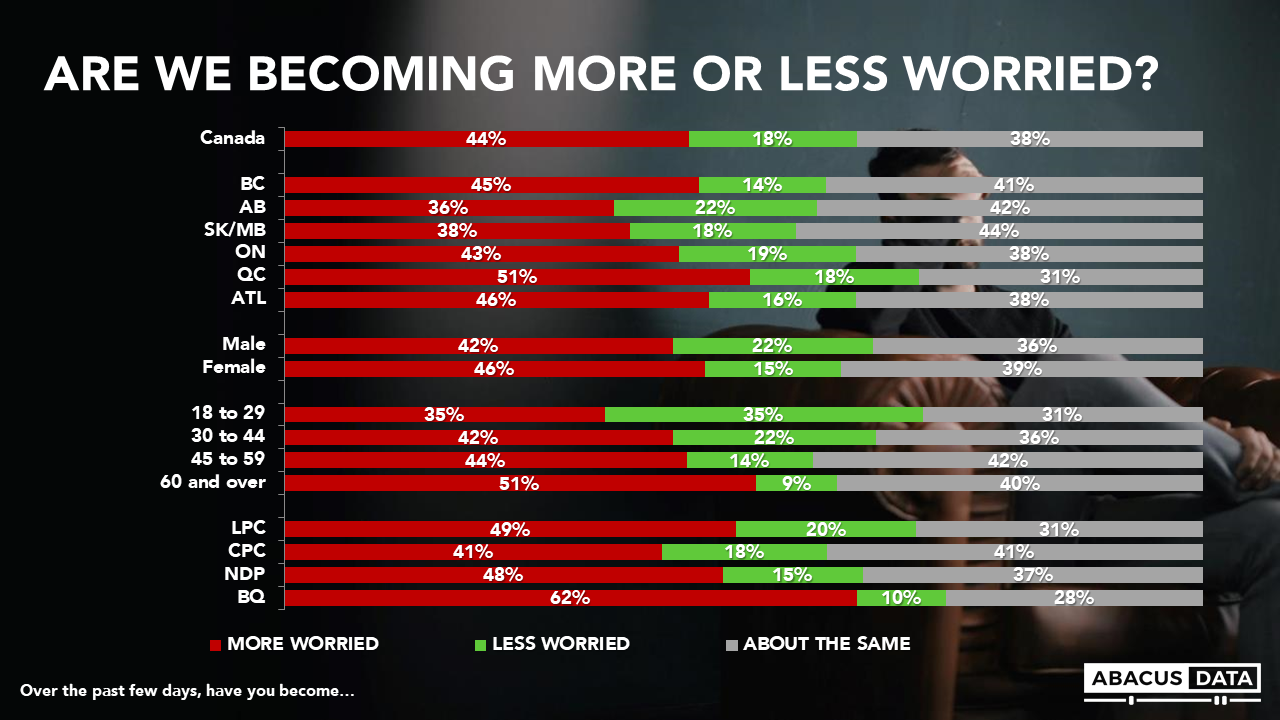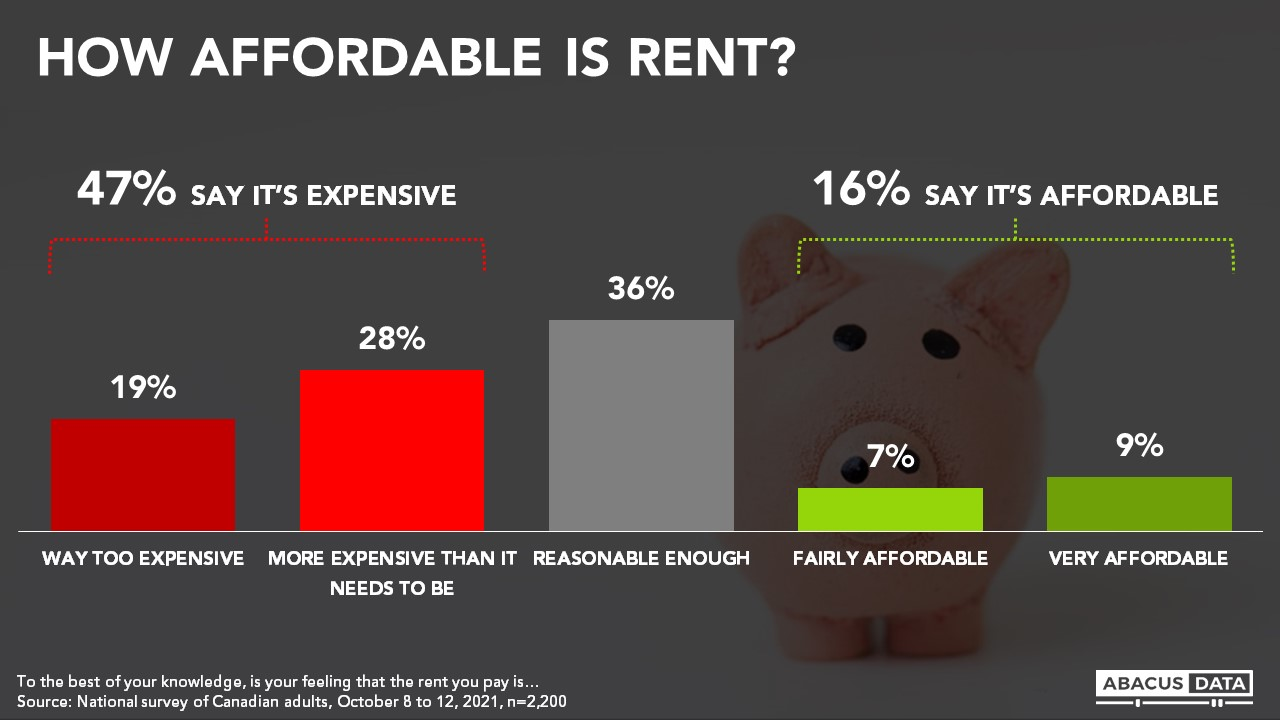What Threats Do Canadians Perceive and What Is Canada’s Influence Around the World? Now vs. 2018
As more and more things are going back to normal in Canada, we decided to get Canadians to look beyond Canada’s borders to think about the threats and priorities they have for Canada on the global stage. We also asked them to gauge Canada’s influence in the world. We updated questions we asked back in 2018.
Here’s what we found:
PERCEIVED THREATS TO CANADA
More Canadians believe that global climate change is a major threat to the well-being of Canadians than any other potential issue. Six in ten think it is a major threat which is up 8-points since 2018. Of course, back in 2018, Trump’s approach to foreign affairs was considered the biggest threat to Canada.
There are several notable shifts. China’s emergence as a world power is perceived as much more of a major threat (54%) compared to 2018 (29%) – a 25-point increase. The perception that the growing authoritarianism in Russia in contrast has decreased, although this survey was done prior to the build-up of Russian troops on the Ukrainian border.
Future pandemics is the third most important threat followed by cyber attacks from other countries. Notably, one in three Canadians think the growing divisions in the United States is a major threat.
Perceptions about the threat of Islamic extremist groups and North Korea’s nuclear program are down by 8 and 9-points respectively since 2018.

FOREIGN POLICY PRIORITIES
Consistent with the major threat that Canadians think global climate change poses, it is the most likely to be viewed as the top foreign policy priority (43%) – up 9-points since 2018.
Ending extreme poverty and protecting Canadians from terrorist attacks are the next most important priorities, although protecting Canada from terrorist attacks has fallen 5-points as a top priority. Interestingly, promoting and defending human rights and strengthening the UN are the lowest priorities as they were in 2018.
Notable changes from 2018 include the rise in priority for global climate change, ending extreme poverty, and improving women’s rights, equality and economic empowerment. Expanding trade opportunities and protecting Canadians from terrorism are less of a priority compared with 2018.

Liberal and NDP voters are far more likely to prioritize climate change, improving women’s equality and ending extreme poverty compared to Conservative voters. Conservative voters prioritize trade and protecting Canada from terrorism.

HOW WE THINK THE WORLD SEE US
Canadians think the rest of the world sees our country as diplomatic (90%), tolerant (89%) and ethical (86%). A large majority also think our country is seen as an example to replicate (77%), rather than something to avoid. All of these are only slightly lower than we found in 2018 when we first asked these questions.
Canadians are more divided on how we view ourselves on the other dimensions. Only 41% think we are a leader rather than a follower and 56% think we are influential rather than ignored. Compared with 2018 more people now believe Canada is a follower. The biggest change is with respect to perceptions of strength; 63% believe the world views us as strong up 7-points from 2018.

CANADA’S INFLUENCE IN THE WORLD
Canadians are quite divided about the role that Canada plays in the world. Compared with ten years ago, 38% think Canada plays a less important role compared with 29% who think the role is more important. In the past three years, Canadians have become more likely to think our influence has declined (from 33% to 38%).

THE UPSHOT
The world feels like a different place than it was in 2018 when Donald Trump’s approach to foreign affairs was considered the biggest threat to Canada. After more than a year and half of a pandemic that has rocked the world, we end 2021 with a quite different view of some of the threats to Canada and priorities for Canada’s foreign policy.
The one constant is the place of climate change. We are now nearing a consensus on global climate change. More Canadians see it as a major threat and more want it to be a government priority.
It would be a mistake to think Canadians only care about climate change. In 2021 they put a higher importance than in 2018 on a range of issues such as ending extreme poverty and improving the rights and equality of women, that touch on making it a Just world for all to live in.
The key new threat is China that will likely continue to be a focus for both Canadians and policy makers as the dynamics of global affairs hinges around the authoritarian vs. democratic axes.
At the same time, Canadians continue to have a very positive view of how the rest of the world views us. This is particularly true when it comes to values such as being diplomatic, tolerant and ethical. Most of also think we are a country that is something to replicate. This positive feeling about how others perceive us is, however, combined with less optimistic view of our role in global affairs. Six in ten think we are perceived as a follower rather than a leader.
Canada has not, according to Canadians, reasserted our influence in the world. In fact, Canadians have become a little more pessimistic about the importance of the role we play in the world. It is not clear whether this is a function of a more challenging global environment or specific events such as the pandemic or the conflict with China.
METHODOLOGY
The survey was conducted with 1,500 Canadian adults from October 15 to 20, 2021. A random sample of panelists was invited to complete the survey from a set of partner panels based on the Lucid exchange platform. These partners are typically double opt-in survey panels, blended to manage out potential skews in the data from a single source.
The margin of error for a comparable probability-based random sample of the same size is +/- 2.5%, 19 times out of 20.
The data were weighted according to census data to ensure that the sample matched Canada’s population according to age, gender, educational attainment, and region. Totals may not add up to 100 due to rounding.
This survey was paid for by Abacus Data Inc.
Abacus Data follows the CRIC Public Opinion Research Standards and Disclosure Requirements that can be found here: https://canadianresearchinsightscouncil.ca/standards/
ABOUT ABACUS DATA
We are the only research and strategy firm that helps organizations respond to the disruptive risks and opportunities in a world where demographics and technology are changing more quickly than ever.
We are an innovative, fast-growing public opinion and marketing research consultancy. We use the latest technology, sound science, and deep experience to generate top-flight research-based advice to our clients. We offer global research capacity with a strong focus on customer service, attention to detail and exceptional value.
We were one of the most accurate pollsters conducting research during the 2021 Canadian election following up on our outstanding record in 2019.
Contact us with any questions.
Find out more about how we can help your organization by downloading our corporate profile and service offering.









